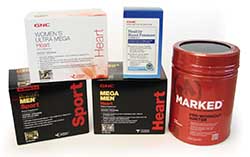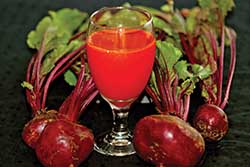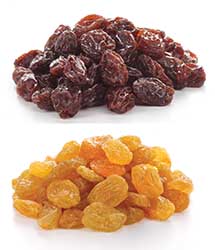Battling Blood Pressure
NUTRACEUTICALS
In the United States, more than 77 million adults have diagnosed high blood pressure, a major risk factor for heart disease and stroke. Sodium intake is most commonly adjusted when trying to control blood pressure levels. While the average American consumes about 3,400 mg of sodium daily, the Dietary Guidelines recommend consuming less than 2,300 mg per day.
In May 2013, DSM Food Specialties, Delft, the Netherlands (www.dsm.com), conducted an international perception survey around food and taste with 5,000 18–45-year-old subjects (50:50, men:women) from emerging markets Brazil, China, Nigeria, and Poland as well as the U.S. (DSM Food Specialties, 2013). One finding was that there is uncertainty about recommended salt intake: only half (51%) of the adults surveyed believe the recommended daily intake for salt is 5 g or less. In addition, about half (49%) believe they consume 5 g or less of salt daily, while nearly one in three believes they consume more than 10 g a day. However, these perceptions about amount of daily salt intake do not align with actual consumption data. The study found that residents of some countries are consuming three times the recommended daily amount.
Another recent study supported by Tate & Lyle, Decatur, Ill. (www.tateandlyle.com), indicated that in the U.S., sodium intake has been on an upward trend, increasing by 63 mg of sodium per day every 2 years from 2001 to 2010 (Tate & Lyle, 2013). The study used data from the What We Eat in America (WWEIA)/National Health and Nutrition Examination Survey (NHANES) to assess overall sodium intake and sources of sodium in the diets of those two years of age and older from 2001 to 2010. The largest contributor of sodium in the diet was grains and grain products (i.e., breads, cereals, and salty snacks), followed by meat, poultry, fish, vegetables, and milk and milk products.
With the release of these two studies, both companies highlighted their ingredient solutions to reduce sodium intake. DSM’s ingredients include a broad selection of 100% natural yeast extracts and process flavors. By activating taste receptors, particularly umami, in the mouth and throat, yeast extract-based flavorings can help compensate for the taste losses that are usually associated with salt reduction. Rich in natural free glutamate, Gistex® HUM LS strengthens bouillon notes and enhances the umami character in soups, meat, and fish products. Maxarome® Pure and Maxarome® Select contain highly neutral taste-enhancing nucleotides to provide a lingering salty taste in milder culinary flavored products.
Tate & Lyle offers SODA-LO™ Salt Microspheres, a salt-reduction ingredient that tastes, labels, and functions like salt because it is real salt. It can reduce sodium by 25–50% in food applications such as bread and salty snacks that are some of the largest contributors of sodium to the diet. It does this through its patent-pending technology that turns standard salt crystals into free-flowing, hollow salt microspheres that increase the perception of saltiness on the tongue.
In addition to reducing sodium levels in foods and beverages, other ingredients and whole foods have been shown to have beneficial effects on blood pressure. Here are brief descriptions of them.
 Grape Seed Extract
Grape Seed Extract
A human clinical study conducted by University of California–Davis researchers showed that a patented grape seed extract, MegaNatural-BP from Polyphenolics, Madera, Calif. (www.polyphenolics.com), may help to lower blood pressure (Polyphenolics, 2013a). Grape seed extract significantly lowered systolic and diastolic blood pressure among 32 pre-hypertensive adult subjects after just eight weeks. “This study showed that the extract when administered orally at a dose of 300 mg daily resulted in a significant reduction in blood pressure,” commented lead researcher C. Tissa Kappagoda, a professor and the director of the Cardiac Rehabilitation Program.
The results from another human clinical study using MegaNatural-BP conducted by researchers at the Center for Nutrition Research, Institute of Food Safety and Health at the Illinois Institute of Technology, were presented by Britt Burton-Freeman and Eunyoung Park at Experimental Biology 2013 (Polyphenolics, 2013b). In the randomized, placebo-controlled study, 36 prehypertensive adult subjects were randomized to drink either a beverage formulated with MegaNatural-BP or a placebo daily for six weeks. At the end of the study, those participants who consumed the drink containing the patented grape seed extract formula on average experienced significant reductions in systolic and diastolic blood pressure compared with those who consumed the placebo.
--- PAGE BREAK ---
Nuts
Katz et al. (2012) investigated the effects of daily walnut consumption on endothelial function and other biomarkers of cardiac risk in a population of overweight individuals with visceral adiposity. Daily ingestion of 56 g of walnuts not only improved endothelial function, but also reduced systolic blood pressure and did not lead to weight gain.
West et al. (2012) evaluated the effects of pistachios on flow-mediated dilation and blood pressure response to acute stress. Twenty-eight adult subjects with dyslipidemia were included in the study. After 2 weeks on a typical Western diet (35% total fat and 11% saturated fat), test diets were presented in counterbalanced order for 4 weeks each: a low-fat control diet, a diet containing 10% of energy from pistachios (on average, 1 serving per day; 30% total fat and 8% saturated fat), and a diet containing 20% of energy from pistachios (on average, 2 servings per day; 34% total fat and 8% saturated fat). When resting and stress levels were included in the repeated-measures analysis, average reductions in systolic blood pressure were greater after the diet containing 1 serving per day vs 2 servings per day of pistachios.
 Beetroot Juice
Beetroot Juice
A small study out of The Barts and The London Medical School in London showed that a cup of beetroot juice a day may help reduce blood pressure (American Heart Association, 2013). Eight women and seven men with high blood pressure who drank about 8 ounces of beetroot juice experienced a decrease in blood pressure of about 10 mm Hg. Beetroot juice contains dietary nitrate, which may help relax blood vessel walls and improve blood flow. The beetroot juice contained about 0.2 g of dietary nitrate, levels one might find in a large bowl of lettuce or perhaps two beetroots. Compared with the placebo group, the subjects who consumed the beetroot juice had reduced systolic and diastolic blood pressure even after nitrite circulating in the blood had returned to their previous levels prior to consuming beetroot juice.
Dairy Foods
Park and Cifelli (2013) recently examined the historical literature and the evidence reviewed by the 2010 Dietary Guidelines Advisory Committee. Examination of the newly published literature, together with evaluation of the evidence as a whole, showed that the weight of evidence indicates dairy foods are beneficially associated with blood pressure; however, additional research is necessary to identify the mechanism of action of dairy foods.
Weng et al. (2013) showed that a diet pattern with more dairy and nuts, but less meat, is related to a lower risk of developing hypertension while Livingstone et al. (2013) showed that consumption of milk predicts prospective blood pressure. Data were from a cohort study, Caerphilly Prospective Study, which included 2,512 men, aged 45–59 years, who were followed up at 5-year intervals for a mean of 22.8 years. The systolic blood pressure was 10.4 mm Hg lower in those who consumed the most milk than in those who did not consume milk.
Yuan et al. (2013) indicated that high intake of dairy (more than 2 servings per day) has antihypertensive effects on blood pressure among youth. Baseline data from 610 subjects aged 8–10 years from the Québec Adipose and Lifestyle Investigation in Youth cohort were used for the analysis. The study showed that high dairy intake was associated with 1.74 mm Hg lower systolic blood pressure and with 0.87 mm Hg lower diastolic blood pressure compared with low intake of dairy.
The researchers found no significant association of calcium, magnesium, or potassium intake on the subjects’ blood pressure, suggesting the role of other antihypertensive components in dairy products.
--- PAGE BREAK ---
 Raisins
Raisins
Bays et al. (2012) showed that routine consumption of raisins 3 times a day may significantly lower blood pressure, especially when compared to common alternative equicaloric snacks. Because of their rich content of dietary fiber, potassium, and phytonutrients, raisins have the potential to lower blood pressure. For the 12-week randomized controlled study, the researchers gave 46 subjects with pre-hypertension raisins or equicaloric alternative snacks 3 times a day. Compared to snacks, raisins significantly reduced systolic blood pressure at weeks 4, 8, and 12. Compared to snacks, raisin consumption was associated with nonsignificant lower diastolic blood pressures. The snacks did not significantly reduce systolic blood pressure or diastolic blood pressure at any study visit.
Flaxseed
Rodriguez et al. (2012) examined the effects of dietary flaxseed on systolic and diastolic blood pressure in subjects with peripheral artery disease (PAD). Hypertension is a major risk factor strongly associated with PAD complications and death. The subjects received 30 g of milled flaxseed or placebo each day for 6 months. Systolic blood pressure levels were 10 mm Hg lower and diastolic blood pressure was 8 mm Hg lower in those who consumed the flaxseed compared to those who consumed the placebo.
Black Tea
Hodgson et al. (2013) showed that drinking black tea can substantially reduce the rate of blood pressure variation. The researchers assessed the effects of black tea consumption on the rate of ambulatory blood pressure variation. Subjects (n = 111) with systolic blood pressure between 115 and 150 mm Hg at screening consumed 3 cups of either powdered black tea solids (tea) or a flavonoid-free caffeine-matched beverage (control) per day. The 24-hr ambulatory blood pressure level and rate of measurement-to-measurement blood pressure variation were assessed at baseline, day 1, and 3 and 6 months. Across the three time points, tea, compared with the control, resulted in lower rates of systolic and diastolic blood pressure variation by 10% during nighttime. These effects, which were immediate at day 1 and sustained over 6 months, were independent of the level of blood pressure and heart rate.
 Linda Milo Ohr,
Linda Milo Ohr,
Contributing Editor, Denver, Colo.
[email protected]
References
American Heart Association. 2013. Drinking cup of beetroot juice daily may help lower blood pressure. Press release, April 15.
Bays, H., Schmitz, K., Christian, A., Ritchey, M., and Anderson, J.W. 2012. Raisins and blood pressure: a randomized, controlled trial. J. Am. Coll. Cardiol. 59: 13s1.
DSM Food Specialties. 2013. Global Insights Series—The Salt Gap. July 14.
Hodgson, J.M., Croft, K.D., Woodman, R.J., Puddey, I.B., Fuchs, D., Draijer, R., Lukoshkova, E., and Head, G.A. 2013. Black tea lowers the rate of blood pressure variation: a randomized controlled trial. Am. J. Clin. Nutr. 97(5): 943-950.
Katz, D.L., Davidhi, A., Ma, Y., Kavak, Y., Bifulco, L., and Njike, V.Y. 2012. Effects of walnuts on endothelial function in overweight adults with visceral obesity: a randomized, controlled, crossover trial. J. Am. Coll. Nutr. 31(6): 415-423.
Livingstone, K.M., Lovegrove, J.A., Cockcroft, J.R., Elwood, P.C., Pickering, J.E., and Givens, D.I. 2013. Does dairy food intake predict arterial stiffness and blood pressure in men? Evidence from the Caerphilly prospective study. Hypertension 61(1): 42-47.
Park, K.M. and Cifelli, C.J. 2013. Dairy and blood pressure: a fresh look at the evidence. Nutr. Rev. 71: 149-157.
Polyphenolics. 2013a. Recently published UC Davis studies provide further evidence of grape seed extract’s benefits on hypertension, cholesterol and glycemic response. Press release, March 1.
Polyphenolics. 2013b. Groundbreaking beverage study is making headlines. Press release, April 29.
Rodriguez, D., Weighell, W., Edel, A., La Vallee, R., Aliani, M., Guzman, R., and Pierce, G. 2012. Potent anti-hypertensive actions of dietary flaxseed in patients with peripheral arterial disease in The Flaxpad Trial. Abstract 12080. Session Title: Vascular Medicine (Noncoronary): Clinical Insights and Quality Outcomes. Circulation. 126: A12080.
Tate & Lyle. 2013. Rise in sodium intake in US over last decade despite health officials’ call for reduction. Press release, April 22.
Weng, L.C., Steffen, L.M., Szklo, M., Nettleton, J., Chambless, L., and Folsom, A.R. 2013. A diet pattern with more dairy and nuts, but less meat is related to lower risk of developing hypertension in middle-aged adults: the Atherosclerosis Risk in Communities (ARIC) study. Nutrients 21 5(5): 1719-1733.
West, S.G., Gebauer, S.K., Kay, C.D., Bagshaw, D.M., Savastano, D.M., Diefenbach, C., Kris-Etherton, P.M. 2012. Diets containing pistachios reduce systolic blood pressure and peripheral vascular responses to stress in adults with dyslipidemia. Hypertension 60(1): 58-63.
Yuan, W.L. Kakinami, L., Gray-Donald, K., Czernichow, S., Lambert, M., and Paradis, G. 2013. Influence of dairy product consumption on children’s blood pressure: results from the QUALITY Cohort. J. Acad. Nutr. Diet. 113(7): 936-941.


